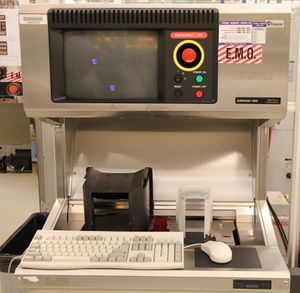Surface Analysis (KLA/Tencor Surfscan): Difference between revisions
Jump to navigation
Jump to search
Content deleted Content added
No edit summary |
added high-particles images |
||
| Line 25: | Line 25: | ||
<br /> |
<br /> |
||
== |
==Examples== |
||
<br /> |
<br /> |
||
{| class="wikitable" |
{| class="wikitable" |
||
| Line 44: | Line 44: | ||
(1.60µm – 28.0µm) |
(1.60µm – 28.0µm) |
||
|- |
|- |
||
|[[File:Surfscan - 230113A7 Gain4 high particles.jpg|frameless|199x199px]] |
|||
|''To Be Added'' |
|||
|[[File:Surfscan 230113A7G2 after low particles.jpg|frameless|195x195px]] |
|||
|''To Be Added'' |
|||
|} |
|} |
||
Revision as of 06:37, 6 June 2023
| ||||||||||||||||||||||||||
About
This system uses a laser-based scattering method to count size and distribution of particles (or other scattering defects) on a flat wafer surface. It can scan wafers in size from 4 to 8 inches.
Documentation
- Standard Operating Procedure
- Operations Manual
- For detailed measurement info, it is highly recommended that you read the manual.
- Wafer scanning process traveler
- Glossary
- Errors
Examples
| Gain 4: Small Particles
(0.160µm – 1.60µm) |
Gain 2: Large Particles
(1.60µm – 28.0µm) |
|---|---|
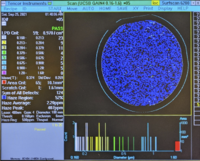
|
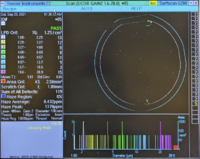
|
| Gain 4: Small Particles
(0.160µm – 1.60µm) |
Gain 2: Large Particles
(1.60µm – 28.0µm) |
|---|---|
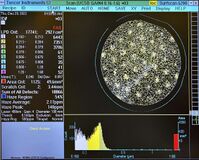
|
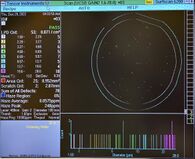
|
